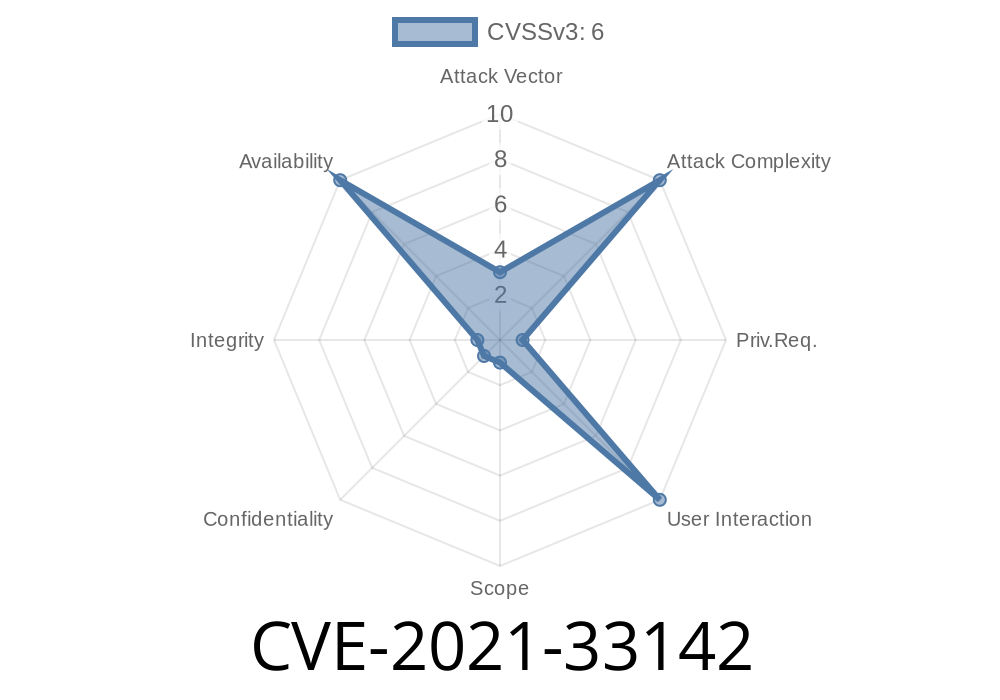In recent security updates, researchers have discovered a crucial vulnerability affecting certain Intel(R) Ethernet Adapters and the Intel(R) Ethernet Controller I225 Manageability firmware. This vulnerability, classified as *CVE-2021-33142* (Common Vulnerabilities and Exposures), is due to improper input validation, potentially allowing a privileged user to enable a denial of service (DoS) attack on the affected systems through local access.
Detailed information about this vulnerability, its implications, and ways to counteract it are provided in this long read post, including code snippets, links to original references, and exploit specifics.
Before delving into the details, it is essential to understand the meaning of CVEs and their impact on cybersecurity systems. A CVE (Common Vulnerabilities and Exposures) number acts like an identification tag assigned to a specific security vulnerability. It acts as a standardized benchmark for identifying flaws that could pose threats to the IT infrastructure, and is a helpful reference for discussing the vulnerability, its detection, and mitigation.
Vulnerability Overview
The vulnerability CVE-2021-33142 stems from inadequate input validation, an issue where user input is not accurately checked or validated before being processed. This could potentially allow an attacker, with privileged user access, to exploit the system and cause a denial of service attack, thereby disrupting the availability of the targeted systems or network.
Exploit Details
As previously mentioned, this vulnerability allows a privileged user to enable a DoS attack by leveraging improper input validation. A DoS attack renders a machine, network, or service unavailable to users by flooding the host with excessive requests. A potential attacker with local access could exploit this vulnerability to thwart attempts by legitimate users to gain access to affected devices or services.
To better illustrate this exploitation scenario, consider the following code snippet. It demonstrates a possible way for attackers to manipulate the input while exploiting the improper input validation vulnerability:
# Code snippet demonstrating improper input validation
def process_input(input_string, device):
# ... (There is no validation of the input_string)
device.send(input_string)
def main():
input_string = "input string from attacker"
device = get_device()
process_input(input_string, device)
This simplistic example outlines how a lack of input validation might occur and leave the system vulnerable to attack. In practice, the exploitation would be more complex and would require a tailored payload for the specific systems targeted by the attacker.
Relevant Links
You can find more information on the issue, as well as mitigation strategies and updates, by referring to the following official resources:
1. Intel's official security advisory: INTEL-SA-00490
2. NVD (National Vulnerability Database) reference: CVE-2021-33142
Mitigation Strategy
Intel has released updates to patch this vulnerability for devices and services that may be affected. It is strongly recommended that you follow the recommended guidelines provided in Intel's official security advisory and update the affected firmware. Monitoring and updating firmware, as well as implementing proper access controls to limit privilege escalations, can help prevent attackers from exploiting this vulnerability.
Moreover, it is critical to ensure that best practices are followed for implementing input validation, particularly in sensitive areas requiring privileged user access. Always validate user input to any system, making sure it is formatted correctly, sanitized, and checked against known secure patterns or configurations.
In conclusion, CVE-2021-33142 presents the potential risk of denial of service attacks to affected Intel(R) Ethernet Adapters and Intel(R) Ethernet Controller I225 Manageability firmware. Therefore, users must stay vigilant and promptly implement the suggested mitigation strategies to safeguard their systems against any possible exploitation.
Timeline
Published on: 02/23/2024 21:15:09 UTC
Last modified on: 05/16/2024 21:15:48 UTC
